
|
|
Font Size:
|
||||
|
|
|
|
||||
STATISTICAL BRIEF #108:
Trends in Employer-Sponsored Health Insurance Plans That Required No Employee Contribution to the Premium Cost, 1998-2003
Highlights
- From 1998 to 2003, the percentage of private sector employees eligible to enroll in an employer-sponsored health insurance plan who were offered a plan that required no employee contribution to the premium was down for both single and family coverage.
- The overall decline masked the fact that the portion of eligible employees who worked in small firms (fewer than 50 employees) offering a single or family plan requiring no employee contribution was unchanged over the period.
- Of all employees actually enrolled in employer-sponsored single coverage, the percentage in plans that required no employee contribution fell from 35.0 percent in 1998 to 27.3 percent in 2003. A similar drop occurred for family coverage, with no contribution enrollment going from 18.7 percent in 1998 to 14.2 percent in 2003.
Introduction
The rapid escalation in health insurance premiums for employer-sponsored plans over the last several years has affected the characteristics of plans offered by employers and chosen by employees. This Statistical Brief discusses changes between 1998 and 2003 in the availability of and enrollment in employer-sponsored health insurance plans that required no employee contribution to the plan premium.
The estimates shown in this brief, which are drawn from the Insurance Component of the Medical Expenditure Panel Survey (MEPS-IC), look at both single and family coverage in the private sector of the economy. Changes for employees working for small and large firms are analyzed. All differences between estimates discussed in the text are statistically significant at the 0.05 level.
Findings
Availability
In 1998, 34.8 percent of employees eligible for health insurance from their employers worked in a firm that offered at least one single-coverage plan that required no employee contribution to the premium cost; by 2003, the rate had dropped to 28.4 percent (figure 1).
The percentage of eligible employees offered at least one family plan that required no employee premium contribution was lower than that for single coverage in both years. Paralleling the trend with single coverage, 17.9 percent of employees eligible for health insurance from their employer in 1998 worked in a firm that offered at least one family coverage plan that required no employee contribution to the premium cost; by 2003, the rate had fallen to 14.2 percent (figure 2). Employee-plus-one plans that required no premium contribution were offered to 14.6 percent of eligible employees in 2003 (for 1998, employee-plus-one plans were included with family coverage) (estimate not shown).
The overall average decrease for both single and family plans masked different trends for small (fewer than 50 employees) versus large (50 or more employees) firms over the period. The percentage of eligible employees working in large firms offering a single-coverage plan that required no employee contribution dropped about one-fifth, from 28.1 percent to 22.2 percent in 1998 and 2003, respectively (figure 1). In contrast, the rate for single-coverage plans in small firms was unchanged.
For family coverage in large firms, the percentage of eligible employees offered at least one plan that required no employee contribution to the premium fell from 14.0 percent in 1998 to 10.4 percent in 2003 (figure 2). Again, for small firms as with single coverage, the offer rate of family coverage that required no contribution was the same (at about 29 percent) for both years.
Enrollment
While 26.6 percent of employees enrolled in health insurance plans sponsored by their employer took a plan that required no employee contribution to the premium cost in 1998, this percentage fell to 19.6 percent in 2003 (figure 3).
Regardless of whether they took single or family coverage, employees were less likely to enroll in plans that required no premium contribution in 2003 than in 1998. Thirty-five percent of employees with single coverage were in plans that required no contribution in 1998; this fell to 27.3 percent in 2003 (figure 4). Nearly 19 percent (18.7 percent) of employees with family coverage were in plans that required no premium contribution in 1998 (figure 5.); this fell to 14.2 percent in 2003. In 2003, 9.6 percent of employees had coverage through an employee-plus-one plan that required no contribution (estimate not shown).
Employees of small firms were much more likely than those of large firms to be in a plan that required no contribution to the premium in both 1998 and 2003. For example, 59.1 percent of employees in small firms took plans requiring no contribution to their single-coverage premium in 1998 versus 26.1 percent of employees in large firms (figure 4).
Between 1998 and 2003, the percentage of employees taking single coverage that required no contribution went down regardless of firm size.
For large employers, the percentage of employees in family plans with no required premium contribution also fell, from 14.6 percent to 9.2 percent (figure 5). However, for family coverage in small firms, the portion of employees covered by plans that required no contribution to the plan premium was unchanged in 2003 from 1998.
Data Source
This Statistical Brief summarizes data from the 1998 and 2003 MEPS-IC. The data are available on the MEPS Web site (http://www.meps.ahrq.gov) or have been produced using special computation runs on the confidential MEPS-IC data available at the U.S. Census Bureau.
Definitions
Health insurance plan
An insurance contract that provides hospital and/or physician coverage to an employee for an agreed-upon fee (premium) for a defined benefit period.
Employee
A person on the actual payroll. Excludes temporary and contract workers but includes the owner or manager if that person works at the firm.
Firm
A business entity consisting of one or more business establishments under common ownership or control. A firm represents the entire organization, including the company headquarters and all divisions, subsidiaries, and branches. A firm may consist of a single-location establishment, in which case the establishment and firm are identical.
Premium
Agreed-upon fee paid for coverage of medical benefits for a defined benefit period, usually a calendar year. Premiums can vary based on a variety of factors, such as services covered, amounts of deductibles and co-pays, location of firm, and demographics of the workforce.
Single coverage
Health insurance that covers the employee only.
Employee-plus-one coverage
Health insurance that covers the employee plus one family member at a lower premium level than family coverage. This family member could be a spouse or a child. If premiums differed for employee-plus-spouse and employee-plus-child coverage, information for employee-plus-child was reported.
Family coverage
Health insurance that covers the employee and the employee's family. If a plan offered more than one pricing level for family coverage, information for a family of four was reported.
Eligible employees
Eligible employees meet the criteria to enroll in a health insurance plan offered by their employer. Eligibility criteria vary by employer and may include length of service, work schedule, permanent versus temporary employment status, or other requirements. Not all eligible employees enroll in an employer-sponsored plan. They may choose not to enroll because, for example, they are covered by a spouse's health insurance plan or due to cost issues.
About MEPS-IC
MEPS-IC is a survey of business establishments and governments that collects information on employer-sponsored health insurance, such as whether insurance is offered, enrollments, types of plans, and premiums. The survey is conducted annually by the U.S. Census Bureau under the sponsorship of the Agency for Healthcare Research and Quality. The yearly response rate has averaged 78 percent for in-scope sample units. Approximately 4 percent of the original sample has been out-of-scope in a typical year. A total sample of 48,000 establishments was selected for the 2003 survey, prior to accounting for losses due to nonresponse and out-of-scope cases.
For more information on this survey, see MEPS Methodology Reports 6, 8, 10, and 14 under MEPS publications at http://www.meps.ahrq.gov/mepsweb/data_stats/publications.jsp and the MEPS-IC technical appendix at http://www.meps.ahrq.gov/mepsweb/survey_comp/ic_technical_notes.shtml.
Suggested Citation
Crimmel, B. L. Trends in Employer-Sponsored Health Insurance Plans That Required No Employee Contribution to the Premium Cost, 1998-2003. Statistical Brief #108. January 2006. Agency for Healthcare Research and Quality, Rockville, Md. http://meps.ahrq.gov/mepsweb/data_files/publications/st108/stat108.shtml
AHRQ welcomes questions and comments from readers of this publication who are interested in obtaining more information about access, cost, use, financing, and quality of health care in the United States. We also invite you to tell us how you are using this Statistical Brief and other MEPS data and tools and to share suggestions on how MEPS products might be enhanced to further meet your needs. Please e-mail us at mepspd@ahrq.gov or send a letter to the address below:
Steven B. Cohen, PhD, Director
Center for Financing, Access, and Cost Trends
Agency for Healthcare Research and Quality
540 Gaither Road
Rockville, MD 20850
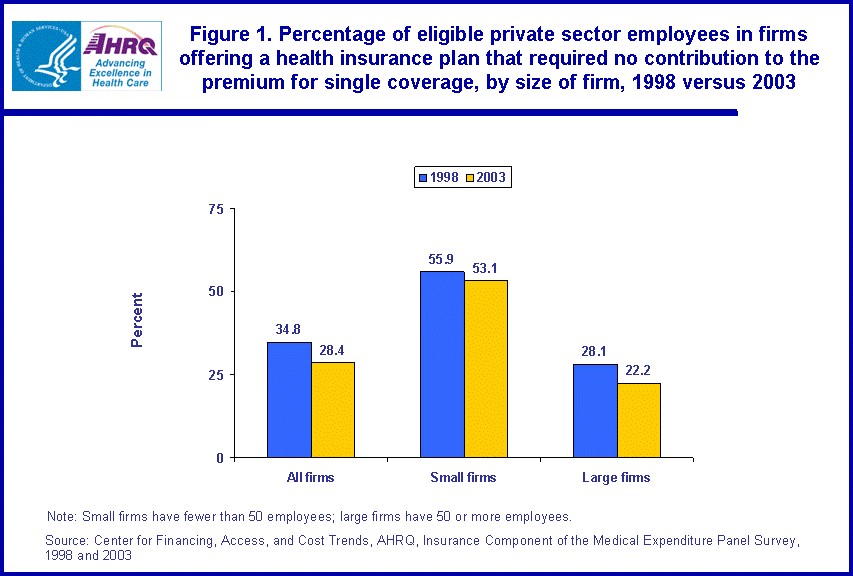 |
||||||||||||||||||||
|
||||||||||||||||||||
|
|
||||||||||||||||||||
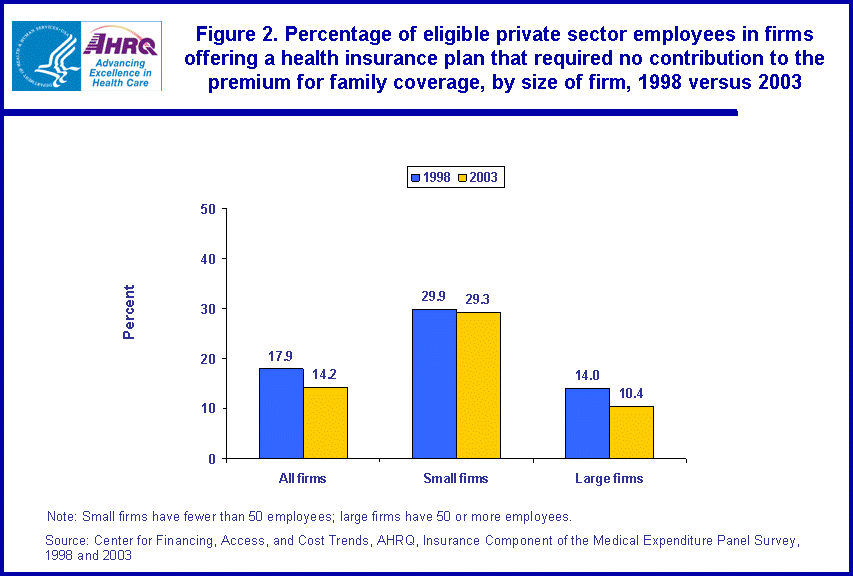 |
||||||||||||||||||||
|
||||||||||||||||||||
|
|
||||||||||||||||||||
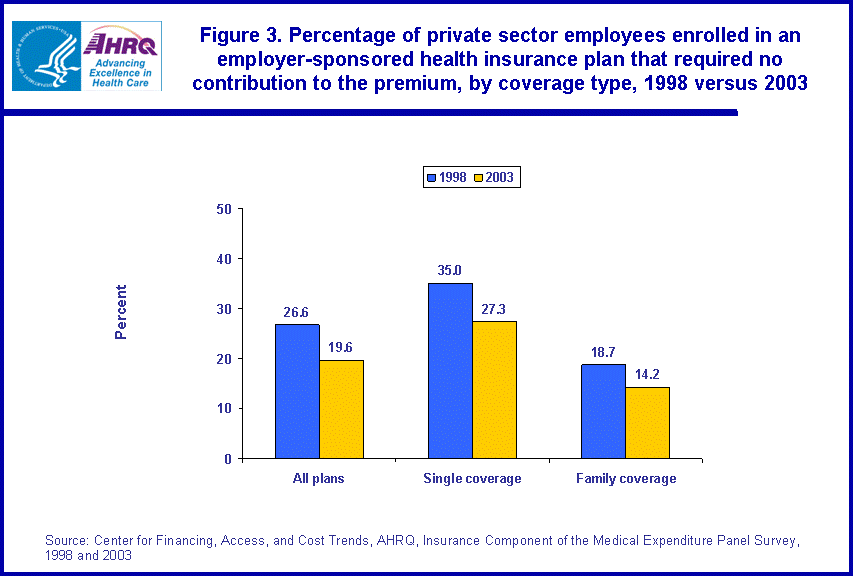 |
||||||||||||||||||||
|
||||||||||||||||||||
|
|
||||||||||||||||||||
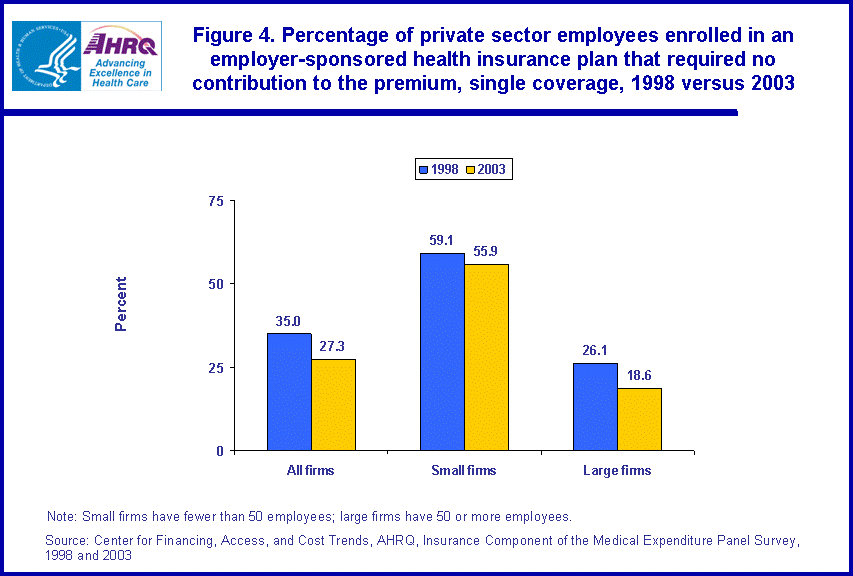 |
||||||||||||||||||||
|
||||||||||||||||||||
|
|
||||||||||||||||||||
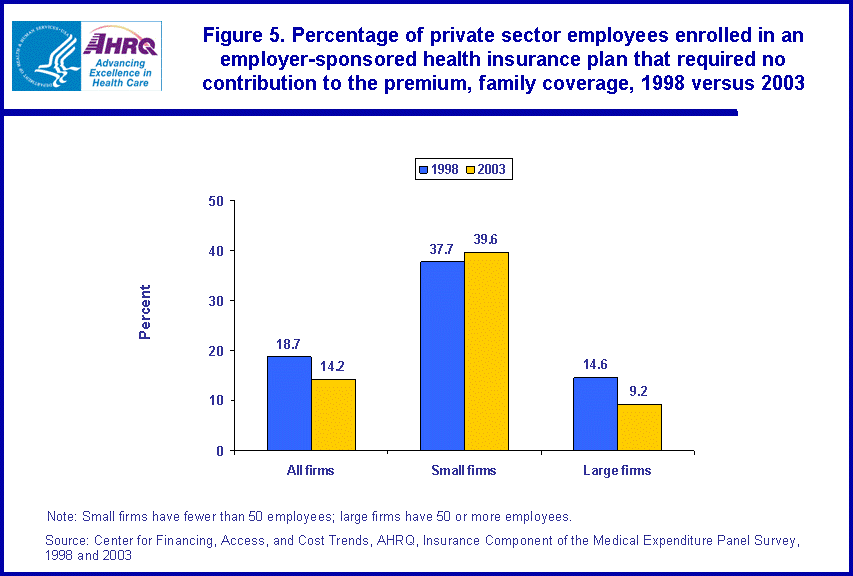 |
||||||||||||||||||||
|
||||||||||||||||||||
|
|
||||||||||||||||||||


